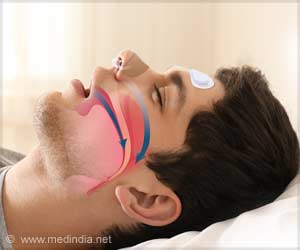Maintaining proper tongue posture as a preventive measure may help avoid several health issues such as misaligned teeth, poor breathing habits, and improper swallowing.
- The ideal position of tongue for overall well-being is being pressed against the roof of mouth
- Failing to maintain a poor tongue position can lead to improper swallowing, flatter face, sleep apnea, and vision problems
- To avoid this, we must practice tongue exercises regularly
Read More..
Proper Tongue Posture
Proper tongue posture involves the placement and resting position of tongue in our mouth. The ideal position where the tongue rests is at the top of the mouth, sitting about 1/2 inch behind the front teeth with the lips sealed and teeth resting slightly apart. This practice of resting our tongue in a certain position is called as mewing.Signs of Improper Tongue Positioning
The tongue is a powerful muscle that impacts many parts of the body beyond the mouth. Here are some signs and symptoms that can indicate improper tongue positioningImproper swallowing – Tongue during swallowing should move up and back like a wave moving the food toward the back of your throat, not forward and down (this is called tongue thrusting). It can negatively affect the shape of your teeth and jaw.
Snoring and sleep apnea – Due to improper tongue positioning, the roof of the mouth becomes narrow which in turn complicates our breathing pattern by obstructing the airway.
Vision problems – Improper tongue posture leads to vision problems since eye sockets are connected to the roof of our mouth impacting the way our eyes rest in head.
Appearance - Most of the connection between tongue posture and face shape relates back to the teeth. When the tongue is placed against the roof of the mouth, it should not push too hard against the back of the teeth. This can create issues in the tooth alignment and dysfunctional bite.
Jaw shape - The narrowing of the mouth that occurs from improper tongue posture can make your jaw and cheekbones weaker and unable to properly support the face. As a result, the chin and cheekbones may protrude or become less prominent over a long period of time.
Body posture – Tongue can even cause bad posture in the body. Improper tongue position can lead to recessed chin and forward thrust of the head that makes the head sit further forward. This causes neck and shoulder pain and tension or headaches.
Benefits
Tongue posture might not seem to be relevant to our overall health and well-being, but there are many benefits by correcting our tongue position.Orofacial myofunctional therapy, also called OMT, focuses on physical exercises that help people to improve their function when eating, breathing, sleeping, and even sleeping by improving tongue posture and mobility as well as orofacial coordination.
The first thing done in this therapy is to establish a proper tongue posture. This practice helps to improve breathing, especially through the nose, swallowing, speech, the ability to enunciate certain sounds and words, and alignment of the teeth and jaw.
Exercises
Improving tongue posture might sound scary, but you can start practicing it at home just by being mindful of where your tongue is resting throughout the day.First exercise
- Place the tip of your tongue up against the roof of mouth, which is located just behind and above your top teeth.
- Then, pull the rest of your tongue to rest flat against the roof of the mouth using suction.
- Close the mouth and seal the lips.
- Hold this posture and breathe normally through the nose.
- Start with making a big, cheezy grin and raising your eyebrows.
- Then try to swallow while keeping your teeth clenched.
- This may be difficult, but we can do it successfully by feeling the back of your tongue pressing against the roof of your mouth–This is where it should be.
Source-Medindia










